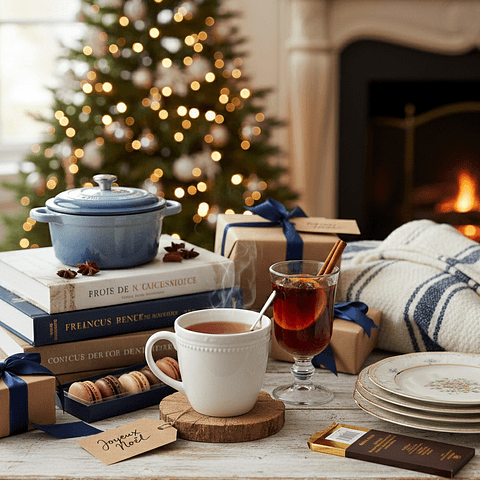It might be spelled the same, but there's nothing pain-ful about eating pain!!
At La Cuisine, we get lots of questions about French bread. With so many types and specifics to keep track of, it’s no wonder! To help, we’ve created this guide to navigating the many delicious options you’ll find in Parisian boulangeries.
During your French Bread endeavors, hopefully, this will help you with the what’s what, a little vocabulary, and fun facts, plus some tips and tricks for buying the best loaves in the city.
If you LOVE French Bread and want to join us from your home kitchen, check out our French Bread Basics Video Class!
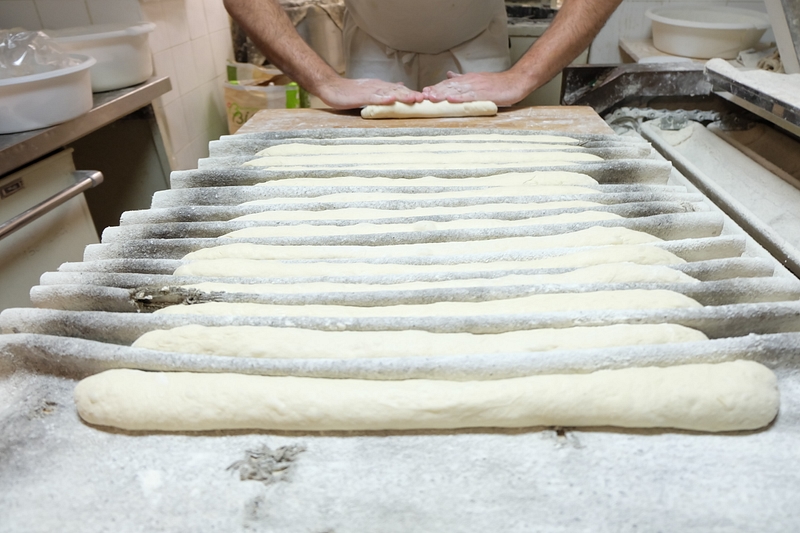
Baguettes in the making
First and foremost : where can I buy bread?
And where can I buy the best French bread? The easy answer is the ‘best’ will always be the one you enjoy the most, however one good indicator in France is to look for the word Boulangerie. It's a great honor to use this term – and it's one that certainly cannot be used willy-nilly.
French law dictates that to qualify as a boulangerie - beyond several administrative and legal requirements (including needing to seek approval before closing up for a vacation) - one of the most important rules is that the bread must be made completely on-site. It cannot be shipped in from a central distributor or baked from pre-prepared dough.
As far as which boulangerie to go to, ask around (or taste around)! Any Parisian is sure to have a recommendation. Ultimately, though, trying lots of different places is the only way to find the boulangerie that suits you best, because everyone’s tastes are a little different.
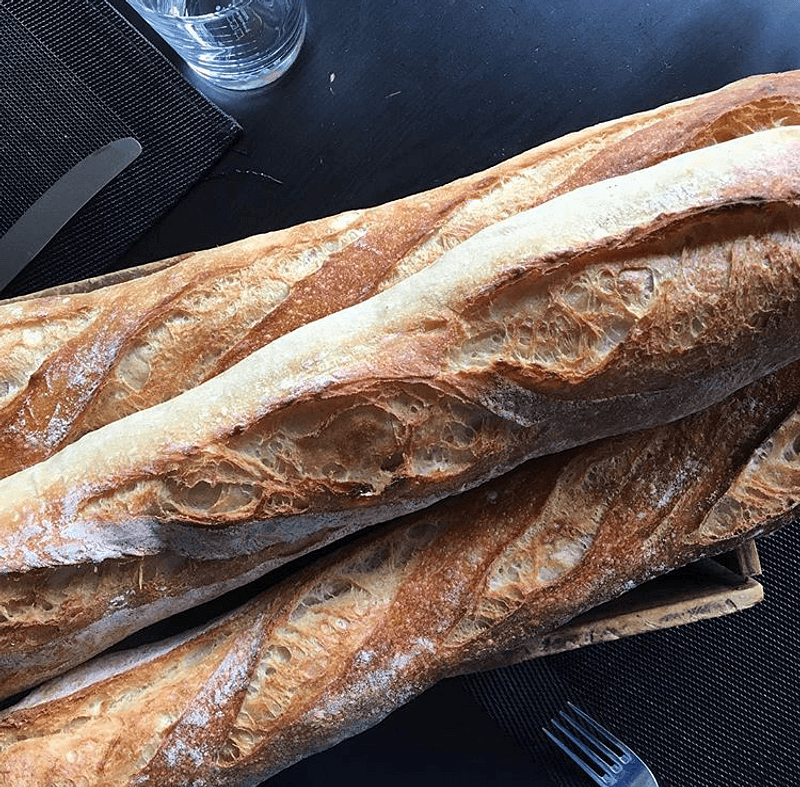
I have found a Boulangerie: what types of Breads can I buy?
The most popular French bread you will certainly know is…
La Baguette!
A very special term that cannot be easily thrown around, the French government has very specific guidelines for defining and regulating the beloved baguette. A ‘baguette’ must weigh between 250-300 grams, measure between 55 and 65 centimeters in length, and can only contain four ingredients: flour, salt, yeast, and water. Lastly, they are price-controlled in France.
Considering their four ingredients, with no preservatives, their shelf-life tends to be short. So, if you don’t think you’re going to finish a whole baguette by the end of the day, don’t count on finishing it up tomorrow. Instead, ask for a demi-baguette: many boulangeries will be pleased to sell you half of a baguette.
Now, just to be confusing, there is the Baguette Ordinaire and the Baguette Tradition. While they are similar there are a few small differences that make the result quite different! Both are made using Farine (Flour), d’Eau (Water), Sel (Salt), and Leveure (Yeast), but some additives can be used in the making of the baguette ordinaire, while the baguette tradition must only include these four ingredients. In addition to this, the baguette tradition can never be frozen and must be made onsite at the boulangerie.
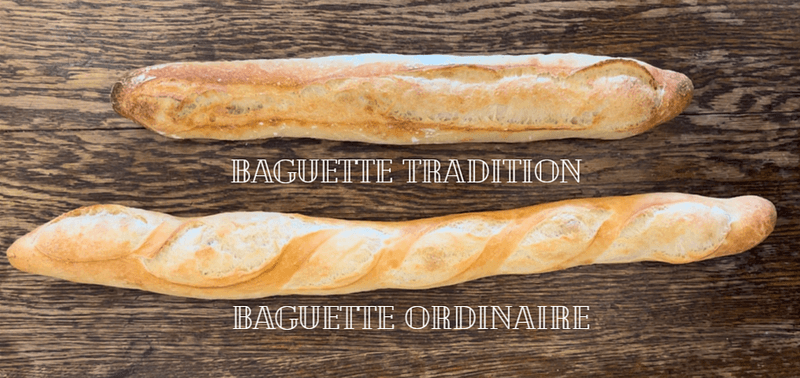
Despite the strict rules surrounding their production, baguettes (traditions) can still vary quite a lot from baker to baker. Any true Parisian has their favorite place to buy baguettes, and the competition between bakeries can be fierce. Baguettes are such a serious topic that each year there is the Grand Prix de la baguette de tradition française de la Ville de Paris (Grand Prize for Traditional French Baguettes in the City of Paris – what a mouthful)!
For example, the best baguette in Paris for 2023 was Au Levain des Pyrénées, located in the 20th arrondissement. What's more, you can find a map of all the winners for the last years just here.
And what is the award, besides a flow of clientele that will cross Paris to get a nibble? Amongst other things, the most notable part of the award is that the winner gets to deliver their fresh bread to the Élysées Palace…i.e., The President of France!


Beyond a Baguette : What other breads are available?
Keep in mind that the baguette, while amazing, is only the tip of the iceberg of French bread. There’s so much more to taste and explore!
This list certainly is not exhaustive, each boulangerie has its own selection, but we’ve made this list of French bread-related vocabulary words to help you navigate. If you look around you will see that boulangeries have their own unique shapes and creations. One great example being the ‘tradition feuilletée au sel de guérande création la parisienne’ which we love to pick up at La Parisienne bakery, winner of the 2016 Best Baguette in Paris award, photo below.
Types of Breads
La Baguette: A long cylinder-shaped bread made of flour, salt, yeast and water. Weighing in at 250-300 grams, and measuring between 55 and 65 centimeters in length
La Boule: A round, crusty loaf (literally a « ball »)
Le Bâtard: a rounder baguette-like loaf that weighs 500 grams
Le Pain aux Figues: bread with figs
Le Pain Complet: wholemeal bread
Le Pain de Compagne: « Country bread » This is a hearty round loaf, usually a sourdough bread
Le Pain de Mie: white bread (like the American kind, bagged and sliced and usually available in supermarkets.)
Le Pain de Seigle: rye bread
La Baguette de Tradition (or ‘Tradi’ if you are cool): very similar to a baguette, but with the allowance of small variations on the type of flour used
La Ficelle: similar to, but thinner than baguette which weighs 100 grams (literally « string »)
La Flute: a thicker version of the baguette, we've seen this called a Parisienne in the United States
Torsade: resembles a very small and thin baguette with ingredients, such as fromage, lardons, olives, etc.
La Fougasse: A provincial bread, often with olive oil and savory ingredients such as fromage, lardons, olives, etc. Think of it as a French focaccia
Pain de Mie: One of our favorites is the most popular Poilâne
L’Epi: A shaping method to create bread that resembles a stalk of wheat
aux lardons : with bacon
aux noix : with nuts
aux olives : with olives
aux raisins: with raisins
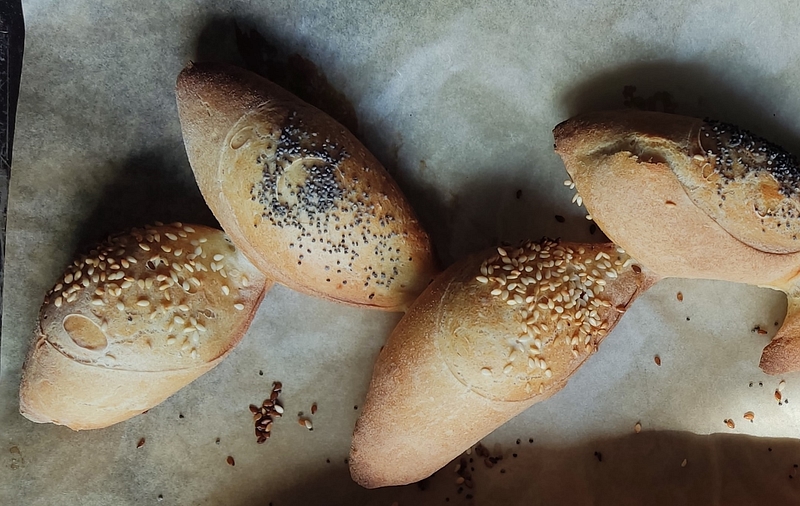
The Epi is perfect for sharing, just break off the little pieces
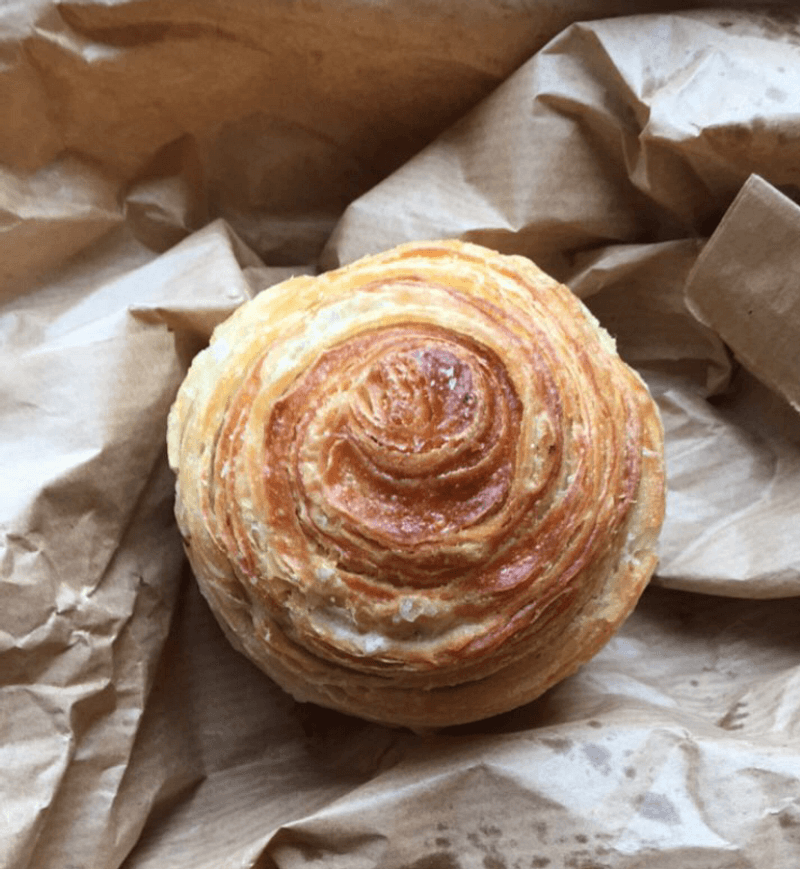
Tradition feuilletée au sel de guérande création La Parisienne
Ingredients
La Farine: flour
La levure / Le levain : yeast. This is one of the major deciding factors in what makes the BEST bread – the yeast (or homemade version the bakery will use). Many of them have a family recipe passed down for years!
Le Sel : salt
Le Sucre : suger
L’Eau: water
Le Blé: wheat
Characteristics
La croûte: crust
Le mie: crumb
Le crouton or quignon: It’s a sacred piece of the baguette (in our opinion) there are only two per baguette…you guessed it, the crispy ends
You will often hear people specify what 'type' of baguette they want when they order it:
Bien cuite or bien dorée: well cooked, nice, and golden
Pas trop cuite or bien blanc: not too cooked, a little paler, a little less ‘crunchy’
Tools and Treatments:
Lame: the handy razor blade tool to make the markings on the bread…imagine the slits you see on the top of the Bread
Pétrissage à la main: kneading and working the bread by hand
Scarification du pain: the action of scaring the bread with the ‘Lame’

Seeing people walking down the street with fresh baguettes under their arms or sticking out of their bags is one of our favorite parts of living in Paris. It’s one of the French stereotypes that can shock you with its veracity. And who can resist nibbling on the tip of the baguette on the way home? So, join in the national march, go explore your local boulangerie with confidence, and enjoy your walk home with a fresh/warm baguette under your arm, whilst nibbling on the crouton!
And don't forget, you can always join us to make your own in a three-hour bread adventure!
